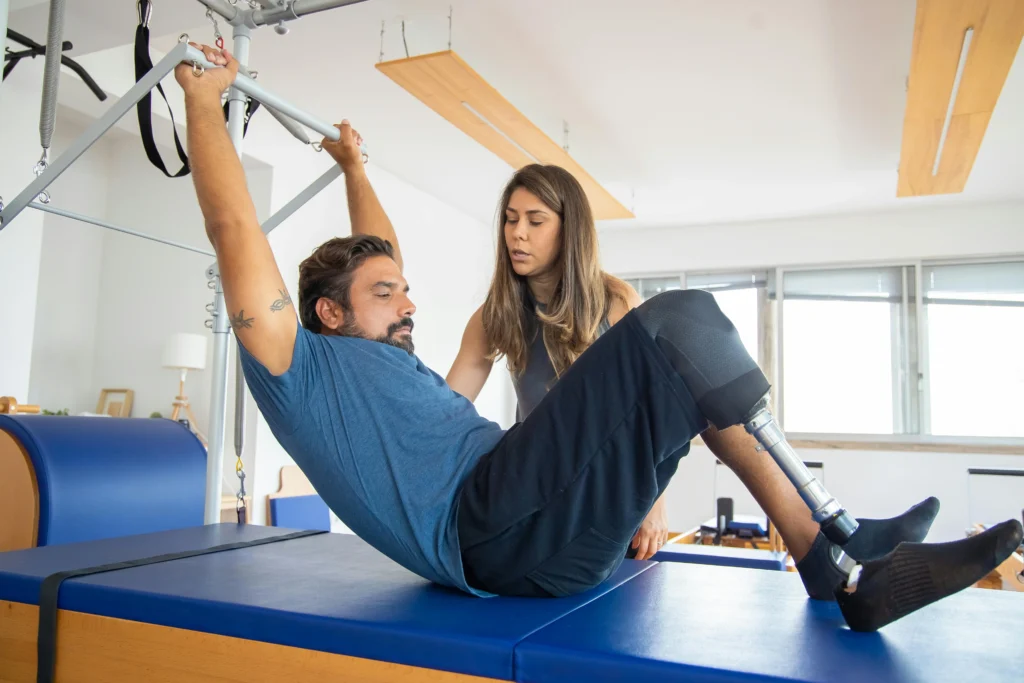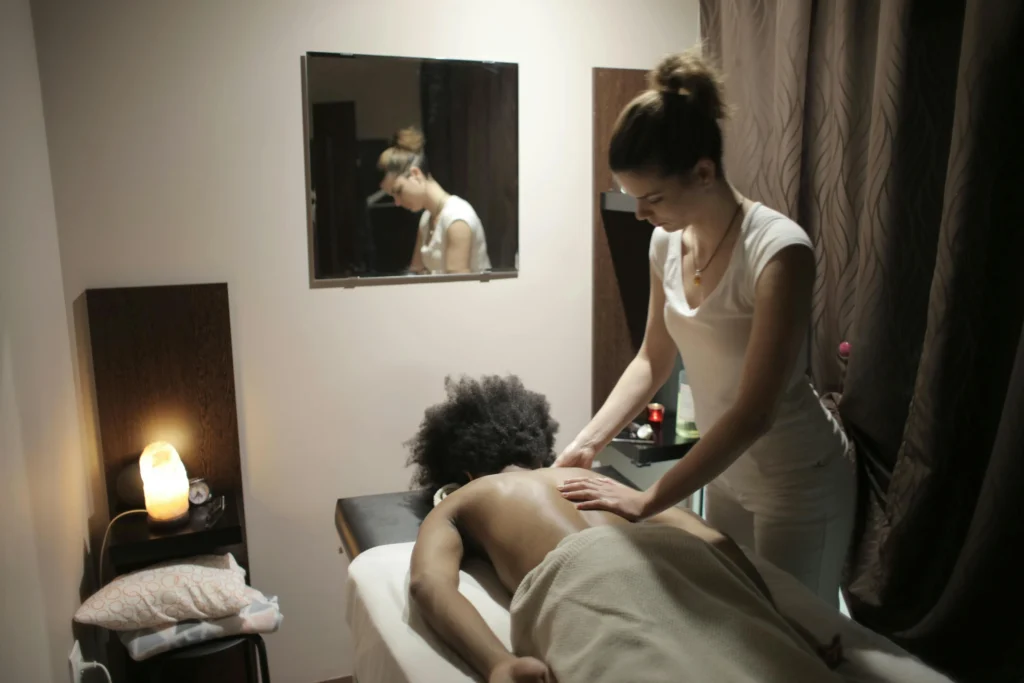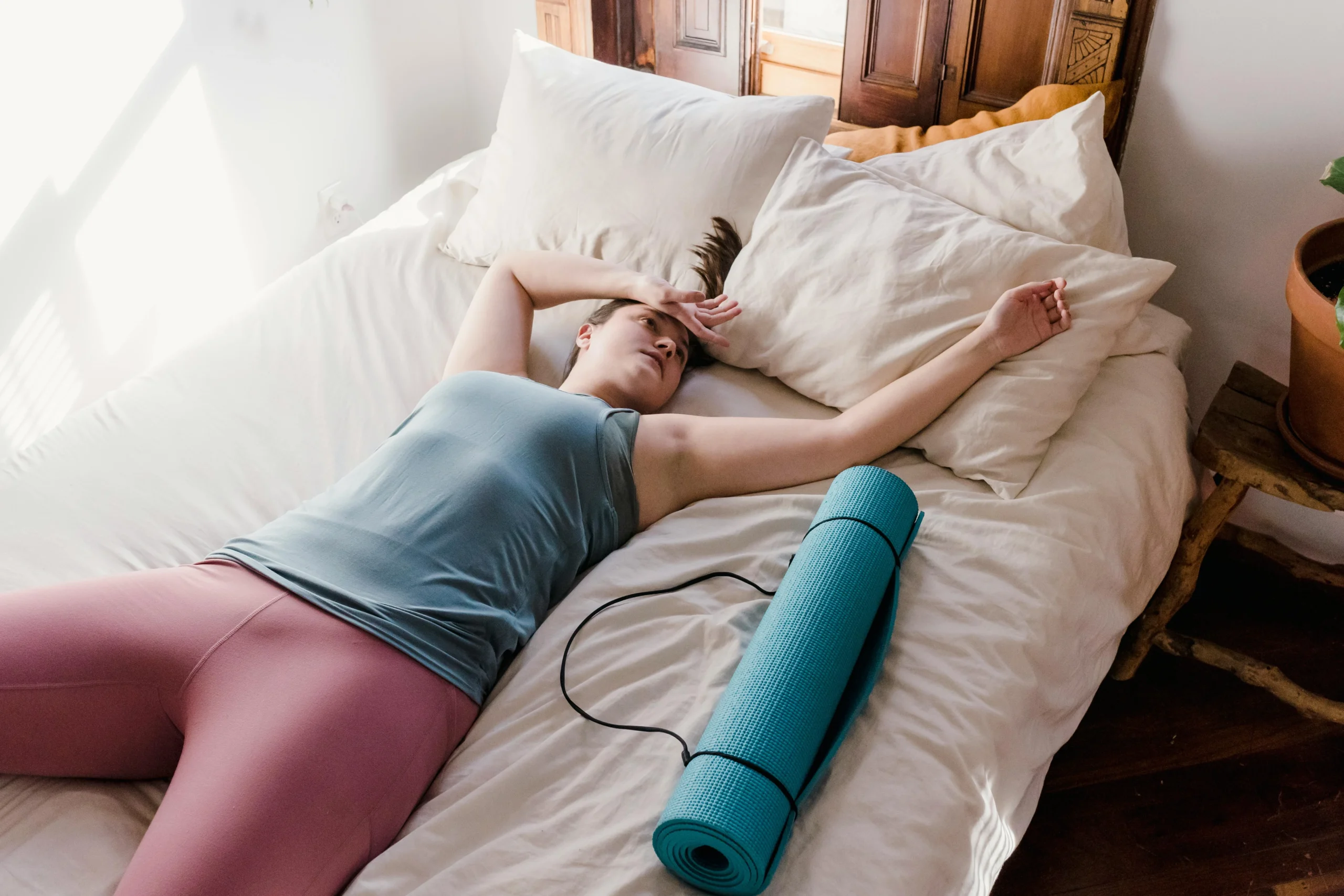Table of Contents
Introduction: Rest and Recovery
Optimal Rest and Recovery Strategies for Athletes 2024 Welcome to our extensive aid on rest and recovery systems for Athletes. You might be a top Athlete or just someone who likes to stay active. Knowing how to improve your time can greatly boost your performance. It can also help prevent injuries. In this article, we will look at the importance of rest and recovery. We will also give useful tips and strategies. You can use them in your daily routine.
Key Takeaways:
- Rest and recovery are vital for athletes. They help improve performance and prevent injuries.
- Enough rest and recovery have physiological and mental advantages.
- Quality rest plays an essential part in athletic presentation and muscle recovery.
- Dynamic recovery methods, for example, portability activities and low-power exercises, can upgrade execution.
Understanding the Importance of Rest and Recovery

Organized rest days inside preparation programs are fundamental for adjusting preparing and recuperation. Grasping the Significance of Rest and Recovery Before diving into the methodologies for rest and recovery, it is essential to fathom the meaning of permitting your body the time it requires to rest and recover. Rest and recovery assume a critical part in a competitor’s general exhibition and prosperity.
Physiologically, rest permits your muscles, ligaments, and tendons to fix and remake themselves. At the point when you take part in extraordinary active work, like preparation or contending, your muscles go through pressure and miniature tears. Rest gives an open door to these designs to mend and develop further, improving your athletic execution.
Notwithstanding the actual advantages, rest and recovery additionally enjoy mental benefits. Preparing with an extreme focus can negatively affect an Athlete’s psychological state. Sufficient rest diminishes the gamble of mental exhaustion, burnout, and overtraining. It permits you to keep up with concentration, inspiration, and mental clearness, guaranteeing you perform at your best.
Moreover, rest and recovery empower your body to control chemical levels and advance ideal invulnerable capability. This forestalls ailment and injury, permitting you to keep up with steady preparation and execution.
Generally speaking, understanding and focusing on rest and recovery as an Athlete is crucial for long-haul achievement. By integrating vital times of rest into your preparation schedule, you can upgrade your presentation, forestall wounds, and keep up with your physical and mental prosperity.
| Physiological Benefits | Psychological Benefits |
|---|---|
| Reduces mental fatigue prevents burnout and overtrainingMaintains focus and motivationSupports mental clarityImproves overall well-being | Reduces mental fatigue prevents burnout and overtrainingMaintains focus and motivationSupports mental clarity improves overall well-being |
Sleep as a Vital Component of Rest and Recovery
Quality rest is a fundamental component of rest and recovery for Athletes. It is key to improving athletic performance. It promotes muscle recovery and maintains overall health. Sufficient rest permits the body to fix and recover, prompting work on physical and mental work.
At the point when Athletes focus on rest, they receive various rewards. One of the key benefits is improved athletic execution. During rest and recovery, the body produces development chemical, which helps fix and modify muscles. Also, rest improves focus, response time, and critical thinking. It allows athletes to perform well. A very much refreshed Athlete is bound to accomplish ideal outcomes in preparing and contests.
Moreover, quality rest upholds muscle recuperation. During rest, the body fixes microtears in muscles and assembles new muscle tissue. This cycle is critical for muscle development, strength, and perseverance. Rest and recovery likewise permit the body to adjust chemical levels, including cortisol, which, when raised, can ruin muscle recovery and increase the gamble of injury.
“Sleep is the golden chain that ties health and our bodies together.” – Thomas Dekker
Notwithstanding execution and recovery benefits, rest and recovery assume a crucial part in general prosperity. It manages the state of mind, lessens pressure, and upgrades mental clarity. Competitors who reliably get quality rest are likely to have a positive mentality. They will also have better pressure on the board capacities and better profound steadiness.
To enhance rest as a feature of the rest and recovery process, Athletes can follow these ways to further develop rest cleanliness:
Create a Sleep-Friendly Environment:
- Guarantee your room is dim, calm, and cool
- Put resources into an agreeable sleeping pad and cushions
- Use power outage shades or an eye cover to shut out light
- Use earplugs or a repetitive sound to limit clamor and unsettling influences
Establish a Consistent Sleep Routine:
- Every day, including weekends, go to bed and get up at the same hour.
- Stay away from stimulating activities just before bed, such as vigorous exercise or screen time.
- To tell your body when it’s time to go to sleep, establish a calming nighttime ritual.
Practice Relaxation Practices:
- Before going to bed, practice meditation or deep breathing.
- Refrain from drinking alcohol, nicotine, or caffeine right before bed.
- Try adding some yoga or light stretching to your nightly regimen.
Athletes may optimize the advantages of rest and recovery, enhance sports performance, and lower their risk of injury by emphasizing good sleep and following these suggestions.
Active Recovery Procedures for Optimizing Performance
With regards to improving athletic execution, rest and recovery are similarly basically as significant as preparing. Dynamic recuperation strategies offer athletes a valuable chance to keep moving. The strategies also promote healing and prevent injuries. Integrate these procedures into your daily practice. They will streamline your presentation and help you reach new levels in your athletic pursuits.
Mobility Exercises

One of the best dynamic recovery methods is integrating portability practices into your daily schedule. These activities focus on improving the scope of movement and adaptability of your joints and muscles. They consider better overall development. Instances of portability practices incorporate hip openers, shoulder stretches, and dynamic warm-up schedules. By routinely playing out these activities, you can keep up with ideal joint well-being and lessen the gamble of injury.
Yoga
Another popular active recovery technique is practicing yoga. Yoga combines physical postures, Another well-known dynamic recovery method is rehearsing yoga. Yoga joins actual stances, breathing activities, and reflection to advance adaptability, strength, and unwinding. It helps Athletes recover from tough workouts. It does this by releasing muscle tension and boosting blood flow. Also, yoga can improve mental clarity and focus. It provides a full way to recover and improve performance.
Low-Intensity Workouts
Integrating low-force exercises into your preparation routine is another compelling dynamic recovery system. These exercises include participating in practices at a lower force than your customary instructional courses, permitting your body to recuperate while as yet remaining dynamic. Low-power exercises, like strolling, swimming, or cycling, expand the blood flow. They also ease muscle soreness and help remove waste from intense training.
By varying your exercises and adding active recovery, you can improve your performance. This also helps you avoid burnout. These procedures permit you to keep harmony between preparation and recovery, guaranteeing that your body is prepared for ceaseless improvement.
Active recovery techniques have many benefits. Mobility exercises improve the range of motion and reduce injury risk. They also enhance joint health. Yoga increases flexibility and strength. It reduces muscle tension and improves mental clarity. Low-intensity workouts increase blood flow. They ease muscle soreness and remove waste products.
| Active Recovery Techniques | Benefits |
|---|---|
| Mobility Exercises | – Improved range of motion – Reduced risk of injury – Enhanced joint health |
| Yoga | – Increased flexibility and strength – Reduced muscle tension – Improved mental clarity |
| Low-Intensity Workouts | – Increased blood flow – Eased muscle soreness – Removal of metabolic waste products |
Incorporating Rest Days into Training Programs
With regards to streamlining athletic execution, rest days are similarly all around as significant as preparing days in any competitor’s program. Rest days give an urgent open door to your body to recuperate, fix, and adjust to the pressure set upon it during extreme exercises. Prepare programs with well-planned rest days. They can help you avoid overtraining, prevent injuries, and improve your performance.
Be that as it may, how would you integrate rest days actually into your preparation program without undermining your advancement? Finding some kind of harmony between stretching your boundaries and permitting your body a satisfactory chance to recuperate is vital.
Rest days are not an excuse to sit on the couch all day; they are an essential component of a successful training program.
The following advice will assist you in incorporating rest days into your training plan:
- Plan your rest days strategically: To figure out how many rest days a week to include in your program, take into account your training objectives, timetable, and recovery needs. Depending on the amount and intensity of your workouts, this might change.
- Listen to your body: Be mindful of the cues your body sends you, such as extreme tiredness, aches in your muscles, and poor performance. You could require an additional rest day if you’re feeling very worn out.
- Active recovery: Perform mild exercises like yoga, low-intensity aerobics, or gentle stretching on your days off. This increases blood flow, facilitates the healing of muscles, and may lessen discomfort in the muscles.
- Mental recovery: Rest days are important for both physical and mental healing. Use this time to unwind, pursue hobbies, interact with others, or practice stress-reduction mindfulness.
By integrating rest days decisively and using dynamic recovery strategies, you give your body the essential opportunity to mend and recharge, prompting further developed execution and diminished chance of wounds. Keep in mind, that rest days are a basic piece of any fruitful preparation program, so treat them with similar significance as your genuine instructional courses.
Proper Nutrition for Optimal Recovery
With regards to improving recuperation after extremely active work, legitimate nourishment assumes a significant part. Filling your body with the right supplements can assist with working with muscle fixes, recharge energy stores, and improve general recovery. In this segment, we will investigate the significance of macronutrients and micronutrients, as well as post-exercise nourishment systems that help ideal recovery.
The Role of Macronutrients and Micronutrients

Macronutrients, including carbs, proteins, and fats, are the structural blocks of a balanced eating regimen that upholds athletic execution and recovery. Starches give the body energy, while proteins are fundamental for muscle fix and development. Fats assume a part in chemical guidelines and give a concentrated wellspring of energy.
Also, micronutrients, for example, nutrients and minerals are fundamental for different physiological cycles. These micronutrients go about as cofactors for catalysts engaged with energy digestion and assume a crucial part in keeping up with general well-being and prosperity.
Athletes should eat a fair and changed diet. It should include sources of carbs, proteins, fats, vitamins, and minerals. This will give their bodies the nutrients for ideal recovery and performance.
Post-Workout Nutrition Strategies
Post-Exercise Nourishment Procedures After an exhausting exercise, it’s vital to refuel your body appropriately to help muscle recuperation and renew energy stores. Consuming a mix of carbs and proteins inside the first hour post-exercise can assist with kicking off the recovery interaction.
Sugars assist with renewing glycogen stores, which are drained during exercise, while proteins give the amino acids important to muscle fix and development. It is a wellspring of lean protein, like chicken, fish, or plants. Pair it with sugars like entire grains, natural products, or vegetables. This combo can make an ideal post-exercise feast or bite.
Besides, hydration is fundamental for recovery, as water helps with supplement transport, temperature guidelines, and in general cell capability. Make sure to drink a lot of liquids over the day, particularly previously, during, and after working out, to help legitimate rehydration.
Sample Post-Workout Meal
| Component | Example |
|---|---|
| Protein | Grilled chicken breast |
| Carbohydrates | Quinoa |
| Vegetables | Steamed broccoli |
| Fruit | Orange slices |
Athletes focus on real food. They add post-exercise meals with a mix of macros and micros. This supports ideal recovery, boosts performance, and meets fitness goals.
Hydration and its Impact on Recovery

Appropriate hydration is indispensable for Athletes hoping to upgrade their recovery and improve execution. While participating in extraordinary preparation and contests, the body loses liquids and electrolytes through sweat. Neglecting to renew these fundamental components can essentially affect recuperation and generally athletic capability.
Hydration assumes a significant part in a few key physical processes that are straightforwardly connected with recovery. Water is fundamental for supplement transportation, muscle fix, and poison end. It keeps up with the equilibrium of electrolytes, guaranteeing ideal nerve and muscle capability. Parchedness, then again, can weaken these cycles, prompting weariness, muscle squeezes, and diminished execution.
Athletes need to lay out a legitimate hydration routine to help their recovery. This includes drinking an adequate number of liquids as well as considering the timing and structure of the refreshments polished off.
“Proper hydration is the cornerstone of effective recovery. By ensuring that fluid and electrolyte levels are replenished, athletes can support muscle repair, reduce fatigue, and enhance overall performance.”
Mindfulness and Stress Management Techniques
With regards to improving rest and recovery, integrating care and stress the executive’s strategies into your routine is vital. These practices advance mental prosperity, however, they likewise significantly affect your generally actual well-being.
Care includes establishing yourself right now and focusing on your viewpoints, sentiments, and sensations without judgment. By rehearsing care, you can develop a feeling of quiet and decrease the pessimistic impacts of weight on your body.
One successful method for advancing care is contemplation. Track down a peaceful space, sit serenely, and concentrate on your breath or a particular item. Permit your considerations to travel every which way without becoming involved with them. This training can assist you with creating mental lucidity, strength, and more noteworthy identity mindfulness.
Notwithstanding reflection, profound breathing activities can be an amazing asset for stress the executives. At the point when you discover yourself feeling overpowered or restless, pause for a minute to zero in on your breath. Breathe in profoundly through your nose, hold for a couple of moments, and breathe out leisurely through your mouth. This basic practice can initiate your body’s unwinding reaction, lessening strain and advancing a feeling of quiet.
“In today’s fast-paced world, it’s crucial to prioritize self-care and find ways to manage stress. By incorporating mindfulness and stress management techniques into your routine, you can improve your overall well-being and optimize your rest and recovery.”
Other relaxation strategies include gentle muscle relaxation, guided imagery, and yoga. They can also help reduce stress and promote relaxation. These practices help with conveying real strain, quiet the mind, and advance a more significant sensation of loosening up.
Mindfulness and stress management techniques have benefits. Regular mindfulness practice improved focus. Deep breathing exercises cut stress. Progressive muscle relaxation and guided imagery improved sleep. Yoga increased self-awareness.
| Mindfulness and Stress Management Techniques | Benefits |
|---|---|
| Regular mindfulness practice | Enhanced mental focus |
| Deep breathing exercises | Reduced stress levels |
| Progressive muscle relaxation | Improved sleep quality |
| Guided imagery | Enhanced emotional well-being |
| Yoga | Greater self-awareness |
Cryotherapy and Cold Therapy for Enhanced Recovery
With regards to speeding up the recovery cycle, cryotherapy and cold treatment stand out in the athletic world. These procedures bridle the force of cold temperatures to give various advantages that guide in improved recovery for athletes.
One of the principal benefits of cryotherapy and cold treatment is their capacity to decrease irritation and muscle touchiness. By presenting the body to incredibly chilly temperatures, these treatments assist with tightening veins, lessening enlarging, and advancing quicker recuperating. This is especially helpful for Athletes who take part in extraordinary instructional meetings and rivalries that can prompt aggravation and tissue harm.
Ice baths, a famous type of cryotherapy, include submerging the body in chilly water or sitting in a tub loaded with ice blocks. This chilly openness triggers vasoconstriction, diminishes metabolic rate, and numbs the region, really decreasing irritation and lightening muscle touchiness. The controlled cold openness animates the body’s normal mending instruments, assisting Athletes with recuperating quicker among exercises and performing at their best.
Cold packs are one more type of cold treatment ordinarily used to target explicit regions of the body. By applying a virus pack or ice pack to the impacted region, Athletes can lessen enlarging and limit torment, working with the recovery cycle. These packs give restricted cooling, making them a successful treatment for intense wounds and post-exercise recovery.
“Cold therapy is an essential part of my recovery routine. After intense training sessions, I rely on ice baths to reduce inflammation and speed up muscle recovery. It helps me stay on top of my game and prevents injuries.” – Sarah Davis, professional athlete
Not in the least do cryotherapy and cold treatment offer actual advantages, however, they likewise decidedly affect a competitor’s psychological prosperity. Openness to cold temperatures sets off the arrival of endorphins, advancing sensations of unwinding and decreasing pressure. These treatments can be restored for both the body and brain, permitting Athletes to accomplish a condition of upgraded recovery.
| Technique | Benefits |
|---|---|
| Ice baths | Targets specific area reduces swelling and pain and facilitate localized recovery |
| Cold compresses | Targets specific area reduces swelling and pain facilitates localized recovery |
When adding cryotherapy to a rest schedule, it’s key to follow the rules and talk to health or sports experts. Knowing the strategies and their belongings will help Athletes a lot. They can use the strategies to streamline their recovery and stop any dangers.
Massage Therapy for Improved Muscle Repair
About streamlining rest and recovery, Massage therapy is an integral asset that competitors can use. Back massage therapy reduces stress. It also helps muscle repair and reduces tension.
Massage therapy includes the control of soft tissues in the body. These tissues are muscles, ligaments, and tendons. Massage therapists use various strategies. These procedures can go from delicate strokes to profound tissue kneading, contingent upon the singular’s necessities and inclinations.
One of the vital advantages of back rub treatment for Athletes is its capacity to improve muscle fix. During serious instructional meetings, muscles go through microtears, which are fundamental for solid development and variation. Nonetheless, these microtears can likewise prompt muscle irritation and aggravation. Massage therapy helps by expanding blood flow to the muscles, advancing the conveyance of oxygen and supplements required for fix and recovery.
As well as working with muscle fixes, Massage therapy additionally diminishes muscle pressure. Serious active work can make muscle filaments tight and hitched, prompting diminished adaptability and an expanded chance of injury. By applying designated strain and control, rub treatment can deliver muscle pressure and work on the scope of movement.
Athletes can select from a variety of massage treatments, each with specific advantages. Several well-liked methods include:
- Swedish massage: This method encourages relaxation and general well-being by using long, flowing strokes.
- Deep tissue massage: This type of massage works deep into the muscle and connective tissue to release tension and encourage healing. It is particularly beneficial for athletes who have restricted movement or persistent discomfort.
- This type of massage is for athletes. It improves performance and prevents injuries. It does this by combining deep tissue massage, stretching, and joint mobilization.
- Trigger point therapy: This technique applies pressure to trigger points to release knots and reduce discomfort. It targets certain regions of pain or tension.
- Myofascial release: This method aims to increase flexibility and reduce discomfort by releasing tension in the fascia, the connective tissue that envelops muscles.
By adding kneading to their rest and recovery, athletes can get the benefits. These include better muscle fixes, less muscle strain, and improved health. It can be a Swedish back rub or a deep tissue meeting. Both are helpful. Massage can be a big help to an athlete’s journey to peak performance.

Cross-Training and Active Rest for Balanced Recovery
Athletes need to balance rest and recovery. They need to give their body time to heal and stay active. That is where broadly educating and dynamic rest become possibly the most important factor. These techniques give elective ways of remaining dynamic while working with recovery and improving by and large physicality.
Broadly educating includes integrating various sorts of activities and exercises into your preparation schedule. This forestalls abuse wounds and keeps your body participating in different developments. By testing your muscles and joints in various ways, broad education can improve your overall physical wellness. It can also reduce the risk of imbalances or weaknesses.
Dynamic rest alludes to light active work or delicate activities performed on rest days. Rather than being inactive, dynamic rest considers expanded blood stream, which can advance muscle fix and diminish muscle irritation. This can incorporate exercises like strolling, swimming, or delicate extending.
By adding broad education and active rest to your recovery plan, you can maintain your physical wellness. You’ll also give your body the rest it needs. A decent way to deal with recovery guarantees that you are ceaselessly difficult with your body while likewise taking into consideration satisfactory mending time.
Conclusion
Rest and recovery are not simply extravagances; they are fundamental parts of advancing athletic execution and forestalling wounds. Through this article, we have explored ways to help athletes improve their sleep and recovery.
Quality rest has arisen as an indispensable variable for Athletes, supporting muscle fix, mental capability, and generally prosperity. For example, combining mobility exercises and light workouts can keep the body moving. This can aid in muscle recovery.
Legitimate sustenance, hydration, and stress in the executive’s procedures assume significant parts in supporting the recuperation cycle. Furthermore, elective techniques like cryotherapy and kneading treatment can help with muscle fixes. They also provide a fair way to rest and heal.
By mastering these procedures and adding them to their schedules, Athletes can reach their full potential. They can operate at peak performance and avoid the risk of injury. Keep in mind, that rest and recovery are not indications of shortcomings but rather fundamental elements for outcome in any athletic undertaking.
FAQ
What are rest and recovery strategies?
Rest and recovery strategies are methods and practices that Athletes use to boost their margin time and improve execution while forestalling wounds.
Why are rest and recovery important for athletes?
Rest and recovery are fundamental for Athletes since they give physiological and mental advantages. They help the body fix and revamp tissues. They also restore energy, build muscle, and prevent overtraining and injuries.
How does sleep contribute to rest and recovery?
Quality rest assumes a fundamental part in rest and recovery for competitors. During rest, the body fixes and recovers tissues discharges development chemicals, and solidifies recollections and abilities acquired during preparation. It likewise directs chemical levels and advances general prosperity.
What are some active recovery techniques?
There are a few dynamic recovery procedures that competitors can integrate into their schedules. Models include low-power exercises. They also include yoga, extending, and soft tissue assembly. They also include foam rolling and flexibility exercises. These methods keep the body moving and advance the bloodstream without unnecessary strain or weakness.
How should rest days be incorporated into training programs?
Rest days should be firmly scheduled in training programs. They allow the body time to heal and adapt to the training. The recurrence and length of lay days rely upon elements like preparation power, volume, and the competitor’s singular necessities. It means quite a bit to find some kind of harmony among preparing and rest to improve execution and forestall overtraining.
What role does nutrition play in optimal recovery?
Legitimate nourishment is vital for ideal recovery. Competitors need to eat well. Their diet should provide enough macros (carbs, proteins, and fats). It should also have enough micros (vitamins and minerals). These nutrients help muscles heal, refill energy, and promote health. Consuming a post-exercise feast or bite that incorporates protein and carbs is particularly significant for muscle recuperation and glycogen recharging.
How does hydration impact recovery?
Hydration is crucial for recovery. It manages internal heat and keeps electrolytes in balance. It also moves nutrients to cells. Sufficient liquid admission is pivotal previously, during, and in the wake of preparing or rivalry to supplant liquids lost through sweat. Legitimate hydration advances ideal physiological capability and improves the recovery cycle.
What mindfulness and stress management techniques can aid in rest and recovery?
Care and stress the executive’s methods. They include reflection, deep breathing, and moderate muscle relaxation. They also include perception. These methods can help competitors relax. They can help them relax mentally and physically. They can also reduce stress and promote rest and recovery. These methods can further develop rest quality, lessen muscle strain, and upgrade general prosperity.
How do cryotherapy and cold therapy enhance recovery?
Cryotherapy and cold treatments, like ice showers and cold packs, can lessen inflammation and muscle irritation. They also boost blood flow, which helps remove waste. These strategies work with the recovery interaction and advance quicker muscle fixes.
How does massage therapy contribute to muscle repair?
Knead treatment assists competitors with further developing muscle fixes and lessening muscle pressure. It boosts blood flow to the muscles. It helps remove waste and can reduce muscle irritation. There are various back rub procedures. For example, Swedish and profound tissue rub. They can target explicit body areas and have restorative benefits.
How can cross-training and active rest benefit recovery?
Broadly educating and dynamic rest include taking part in elective activities and exercises that supplement a competitor’s essential game or preparing schedule. These practices help prevent abuse wounds. They also allow recovery in specific muscle groups while building others. They improve overall fitness and provide a mental break from boring training.
